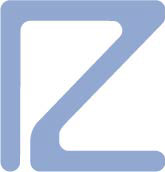project overview
Duration: 2 semesters
Project Location: 604 King St. West, Toronto
This thesis project, "Link Office Hub," aims to create a community co-working utopia that provides local small businesses with a place to move beyond their original tiny cubicle offices. It is intended for those who wish to work in a larger office environment and have more social interactions with other professionals in the community. The concept of movement arises from the issue of physical spine pressure common in typical sedentary office settings. I intend to design an environment that stimulates the flow of physical movement throughout the space to facilitate a healthy working environment.
THE PROBLEM
In typical office settings, employees often spend long hours seated at their desks, leading to a sedentary lifestyle that can contribute to significant health issues, particularly physical spine pressure. This problem inspired the concept of movement and connection, highlighting the need for a workspace that encourages physical activity. By designing an environment that stimulates the flow of movement, the goal is to create a space that alleviates spine pressure and fosters social interaction among employees. This approach seeks to transform the traditional office into a dynamic and health-conscious environment.
THE PROCESS
First, I developed a concept model that embodies the ideas of movement and connection. Then I began by sketching initial ideas with pen and markers, capturing my vision for the exterior, rooftop, and public social spaces, including a cafe and library. These sketches also illustrated meeting rooms, collaborative spaces, private working areas, and individual workstations, laying the foundation for a dynamic and interconnected workspace design.

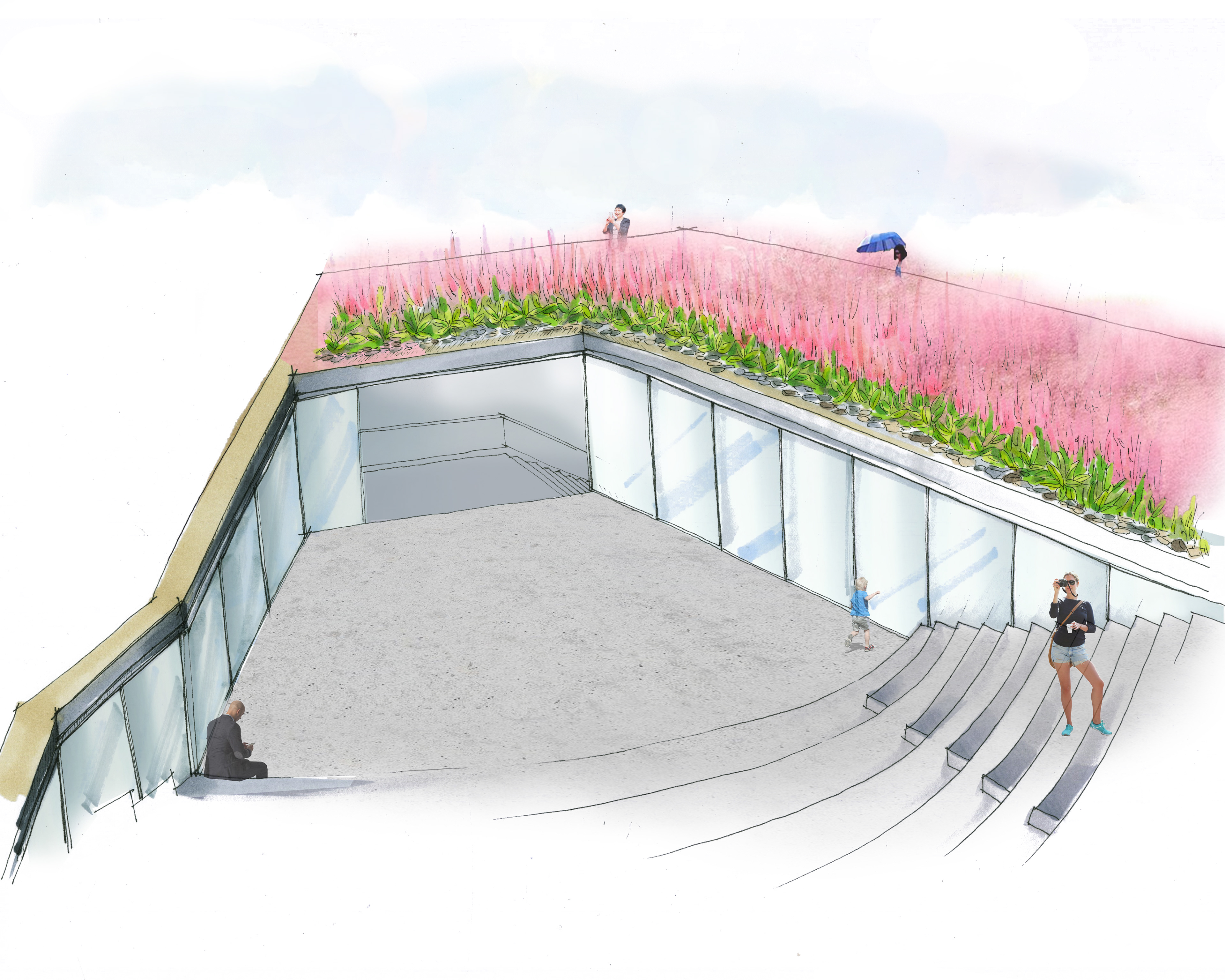
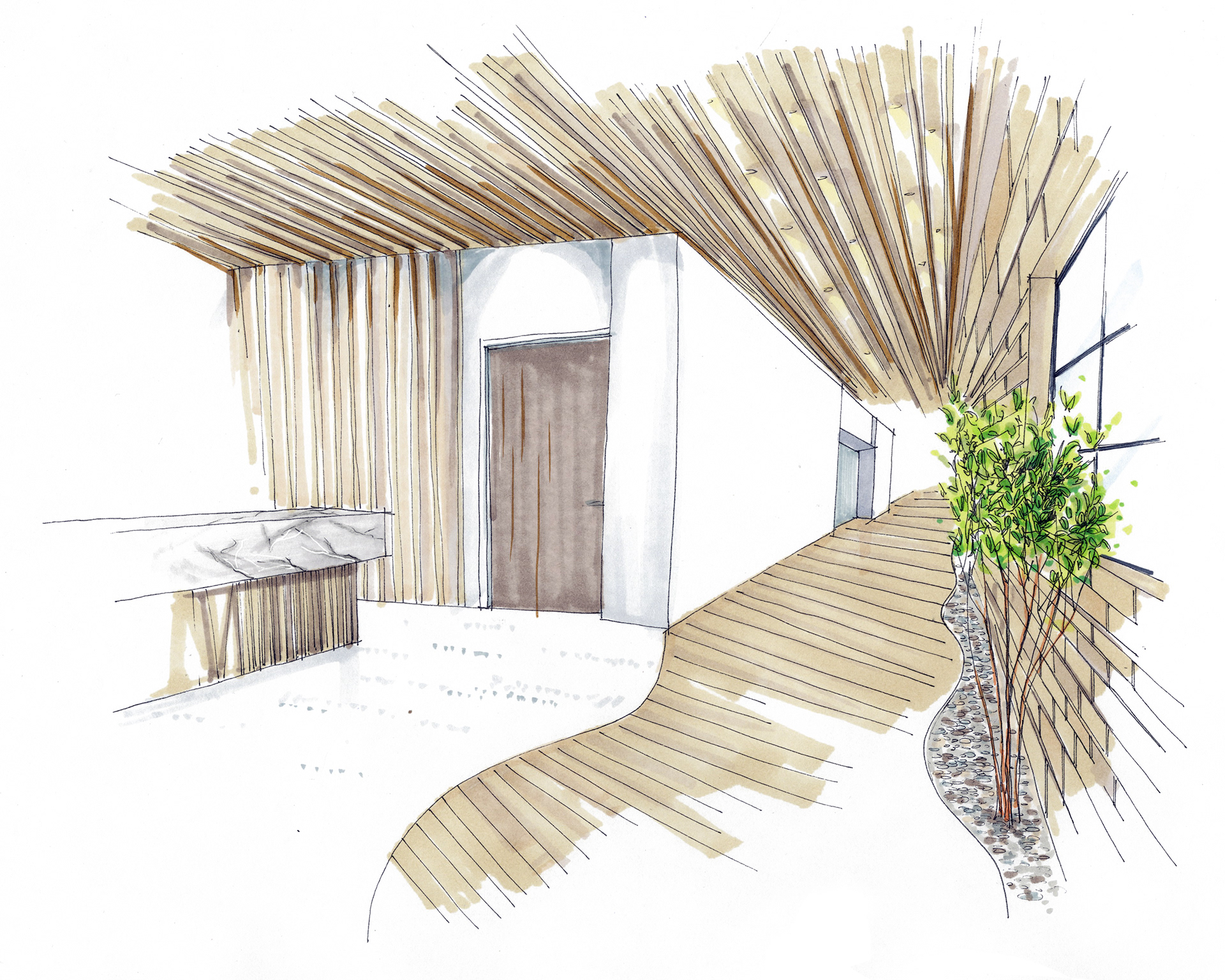
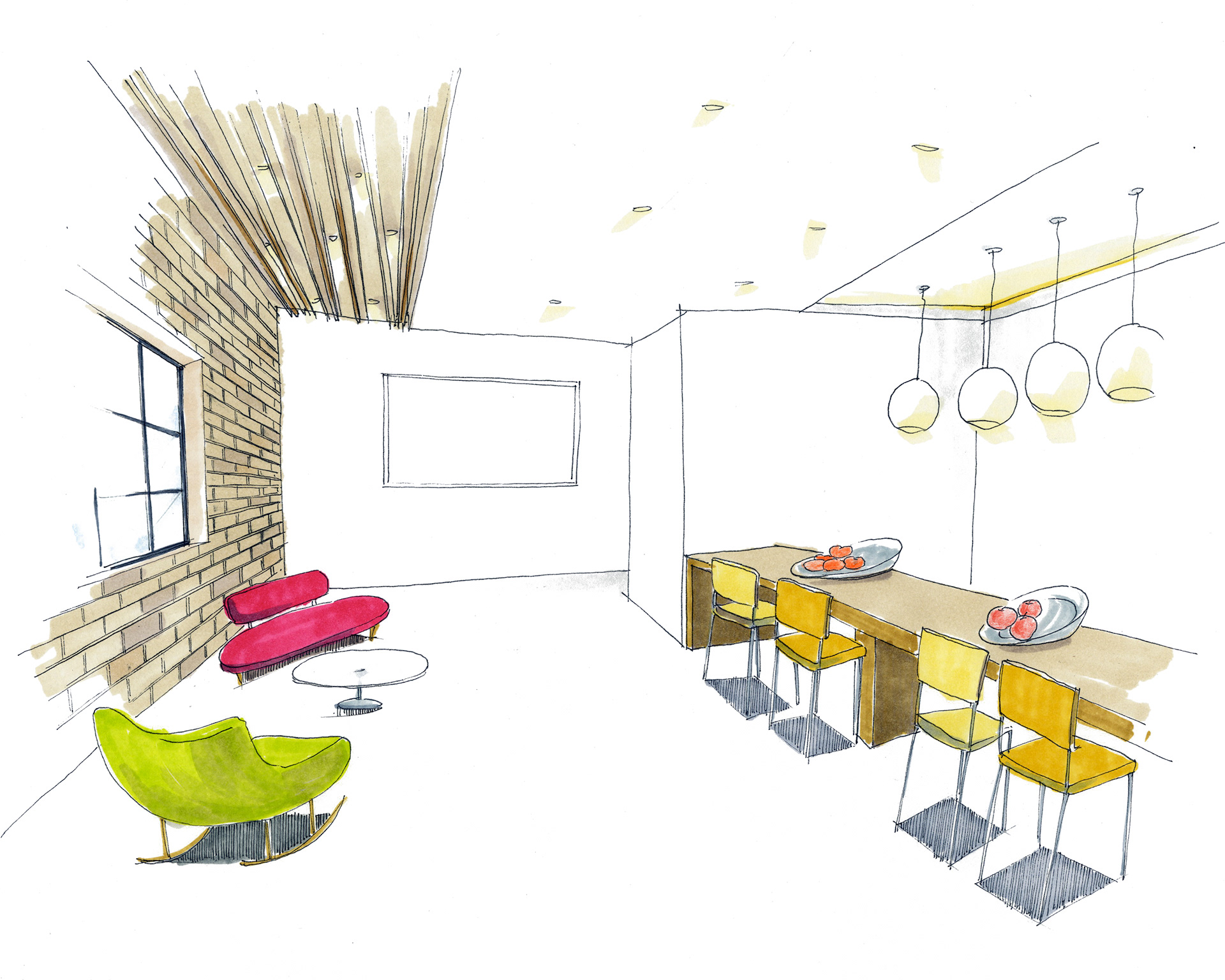
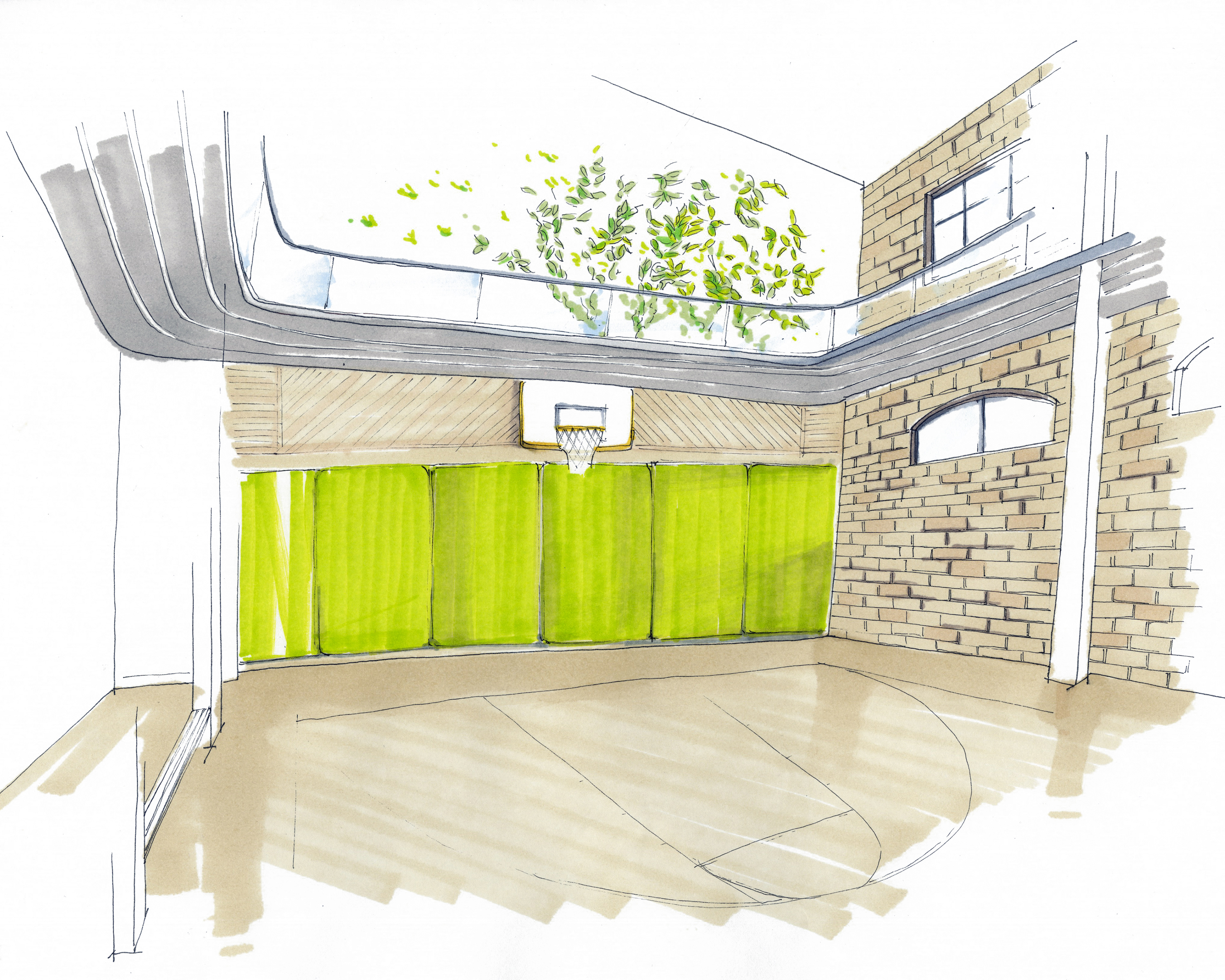
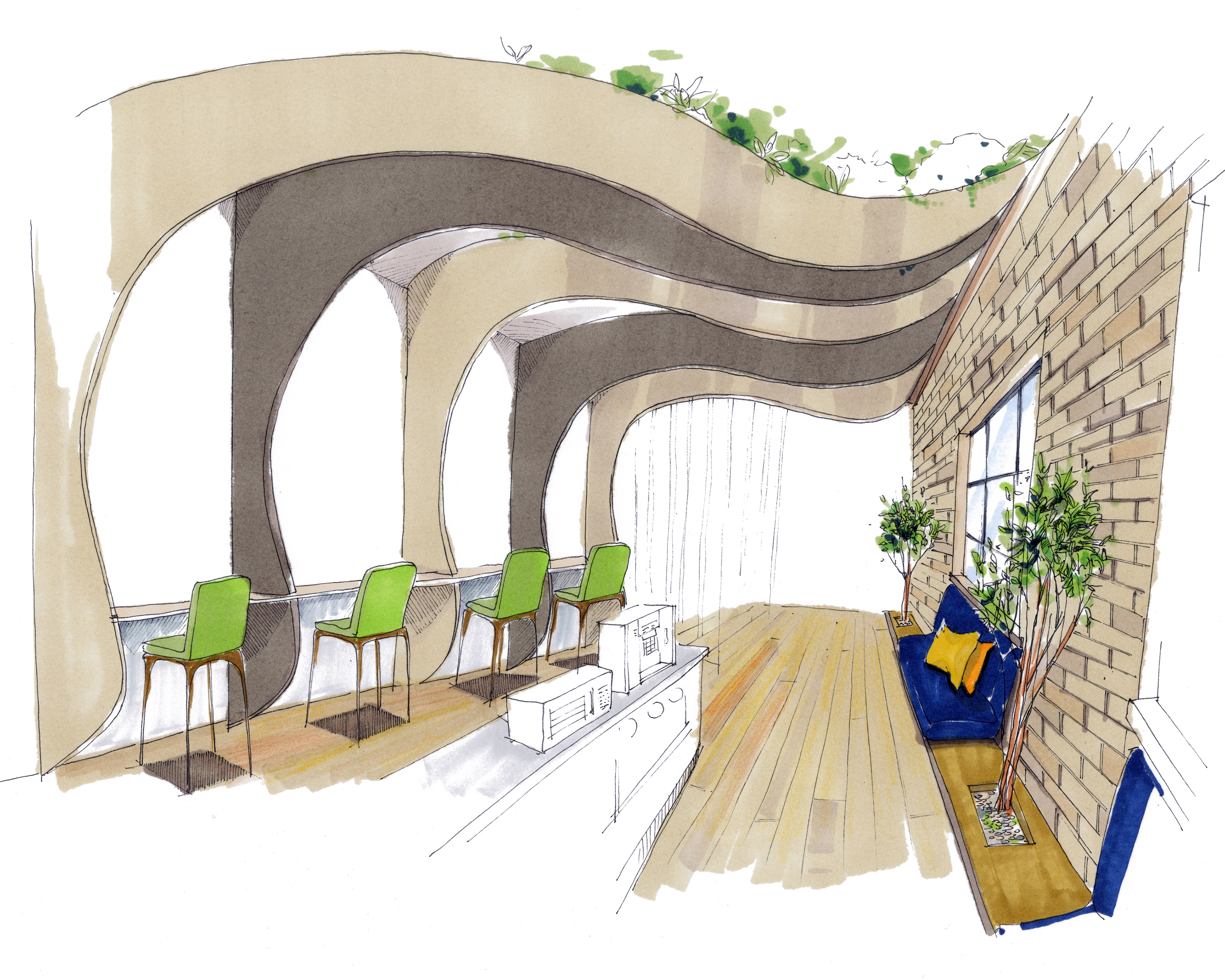
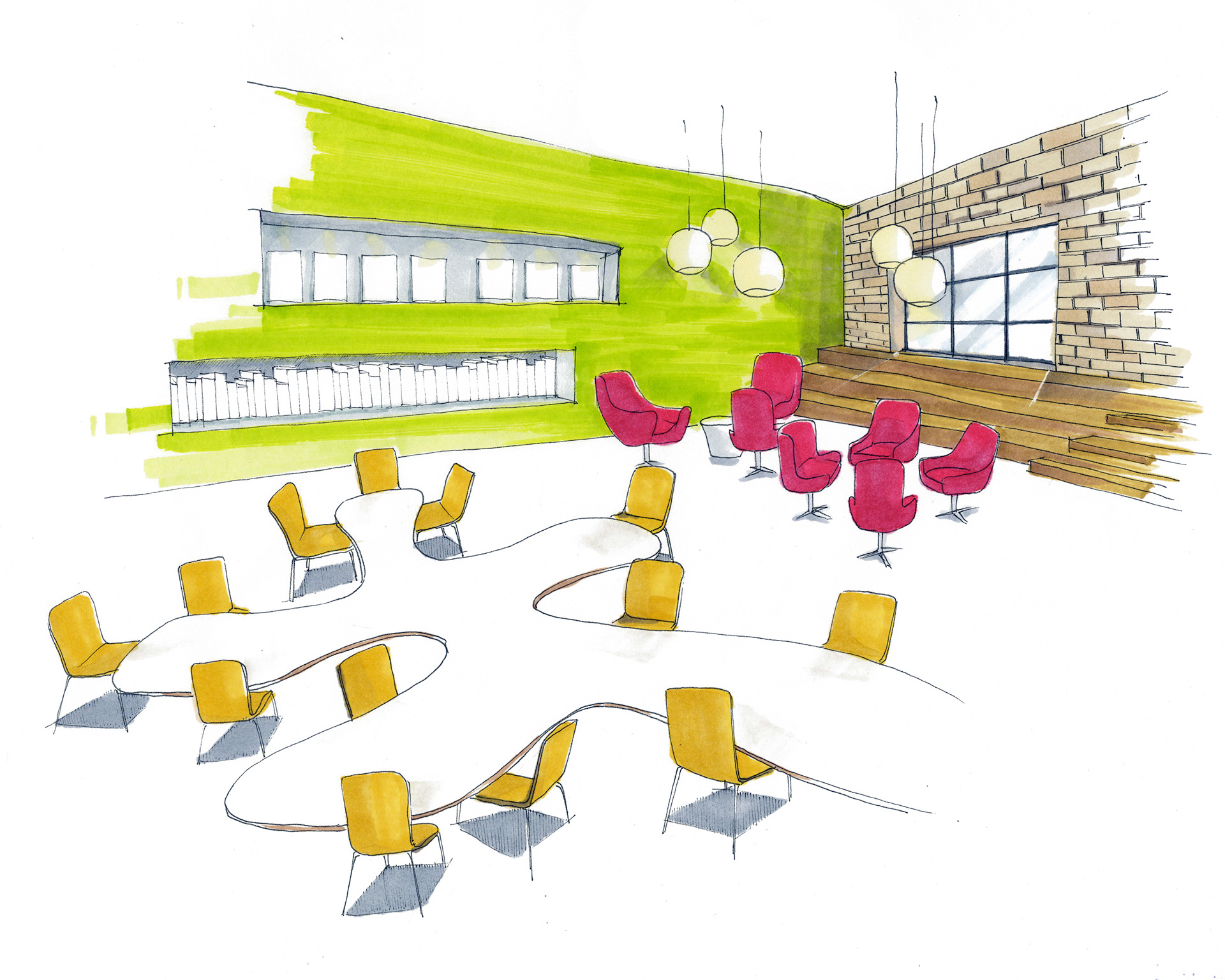
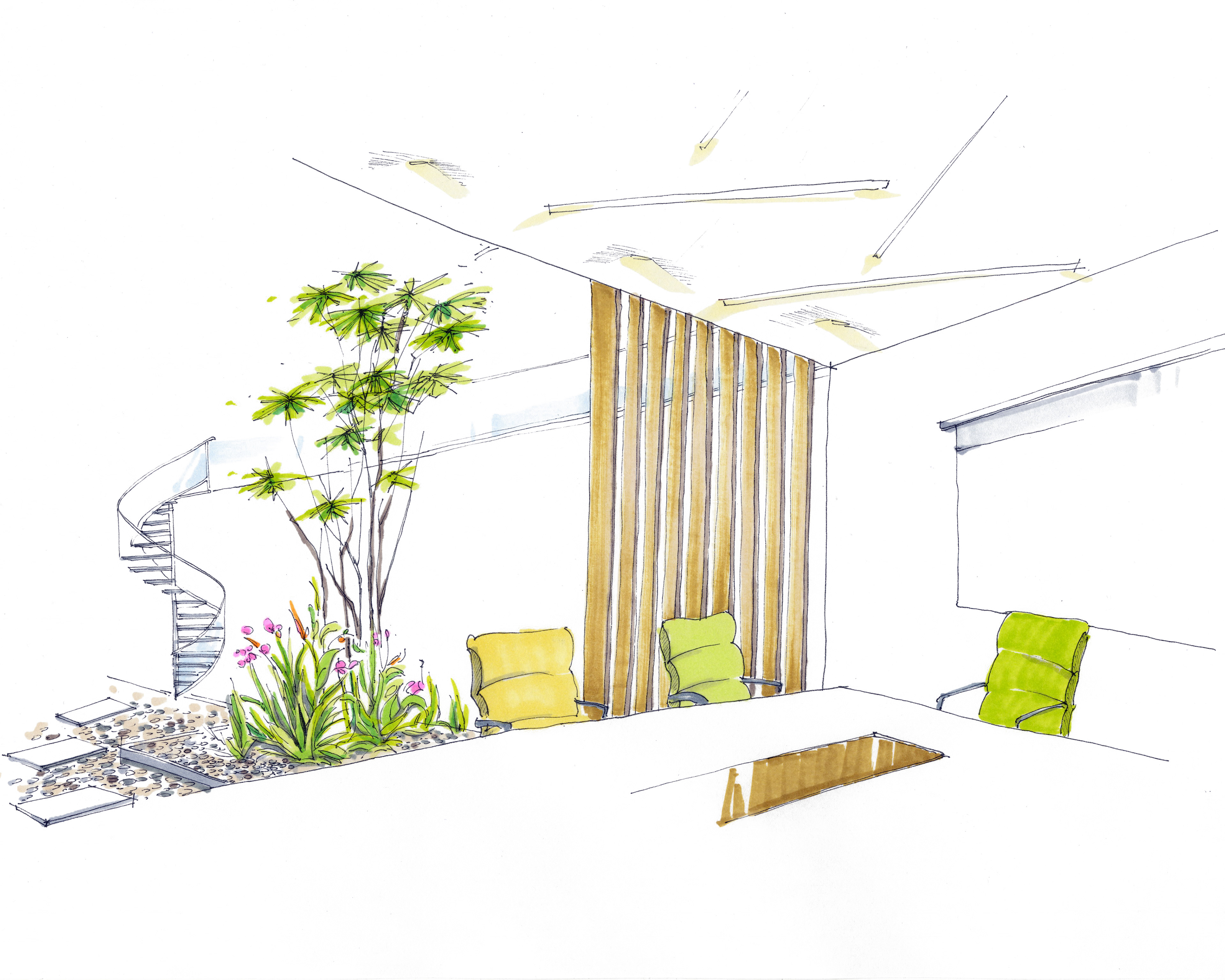
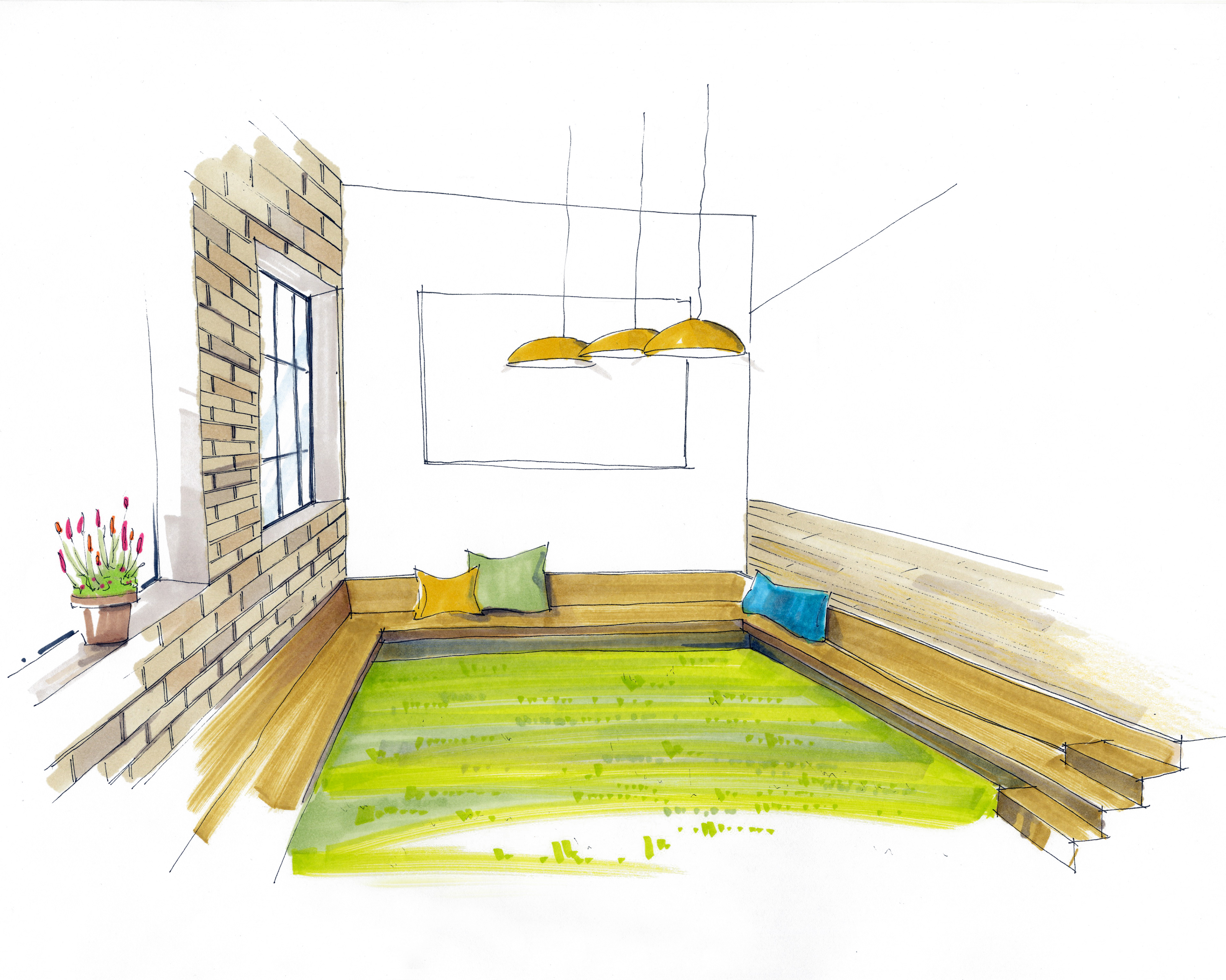
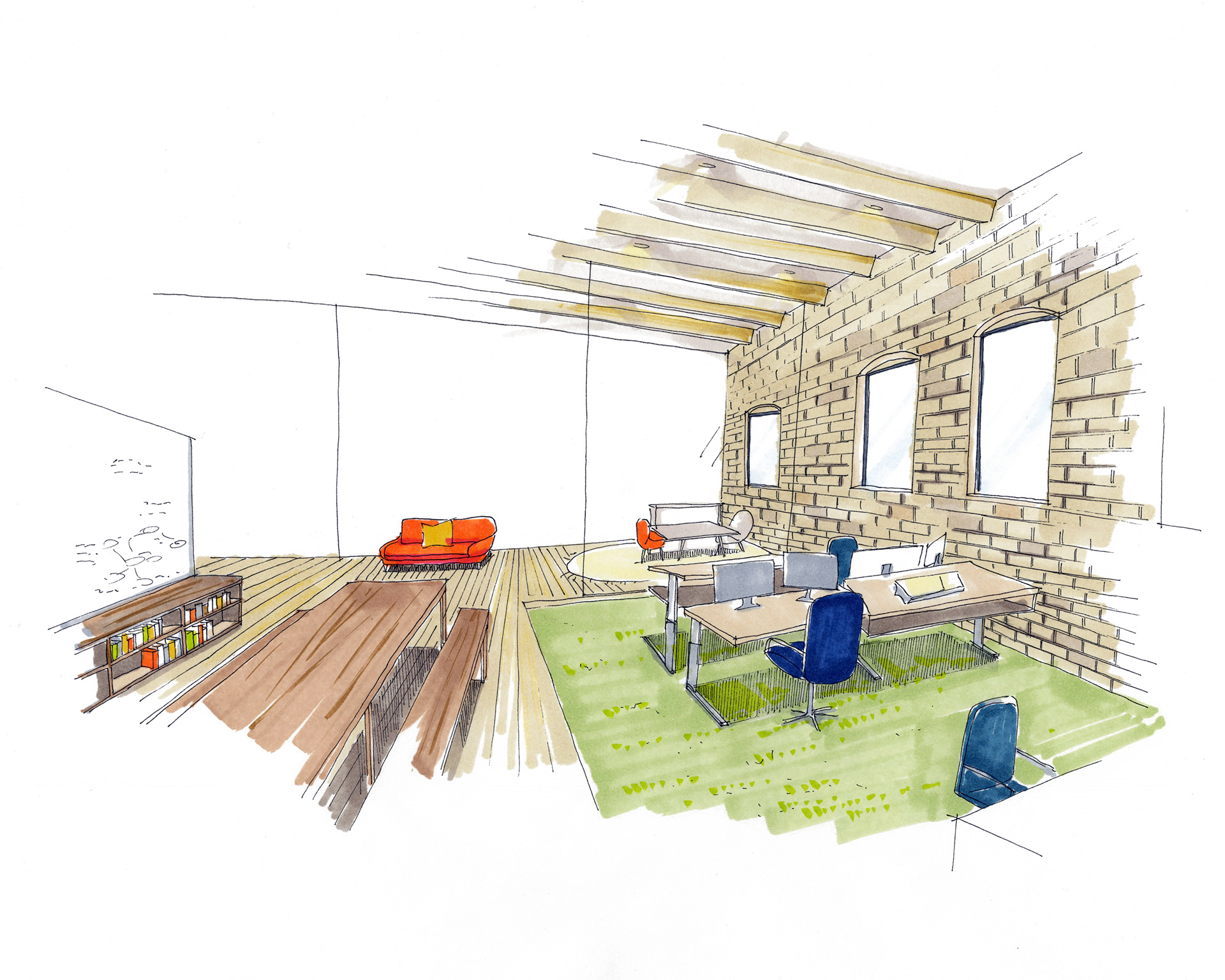
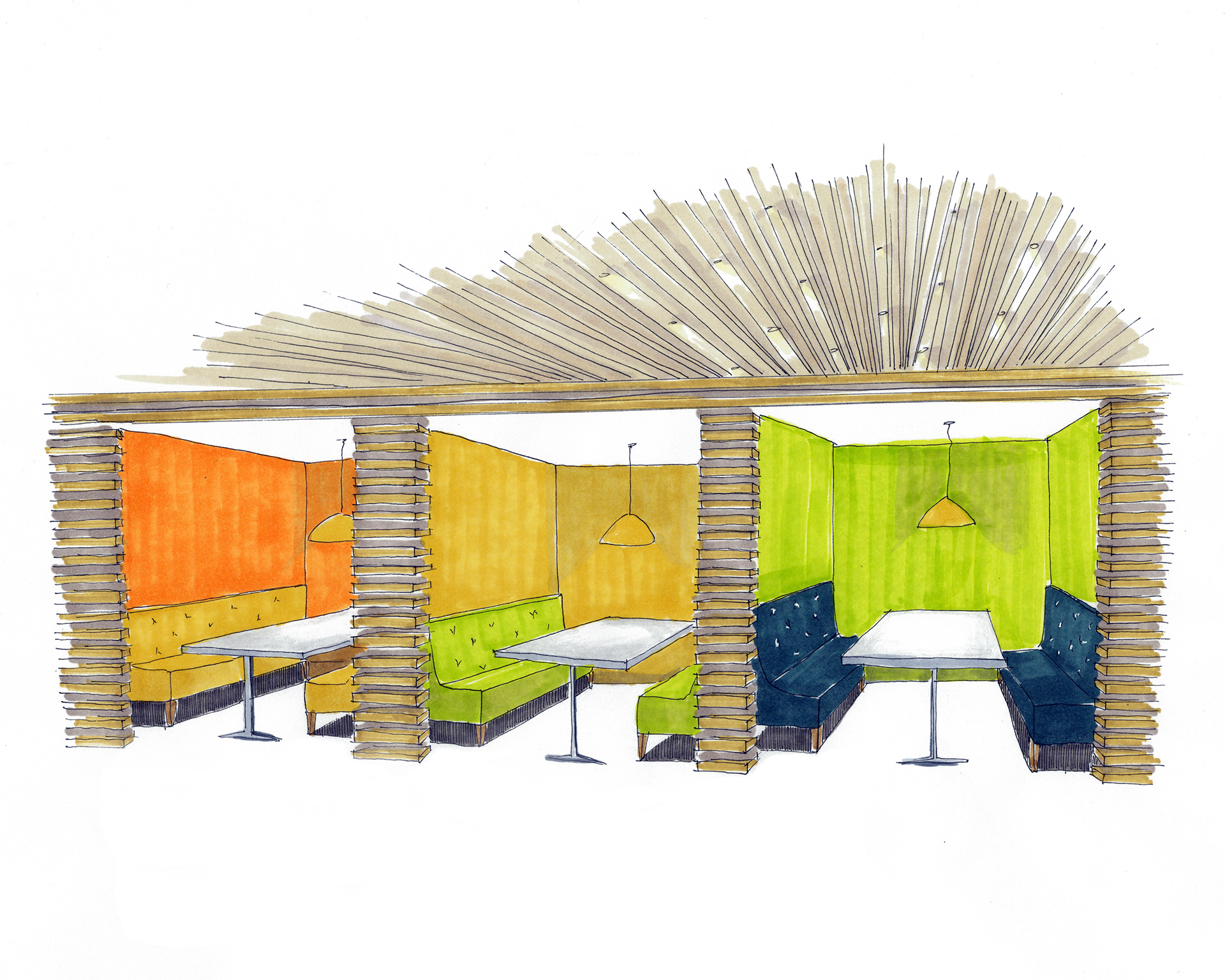
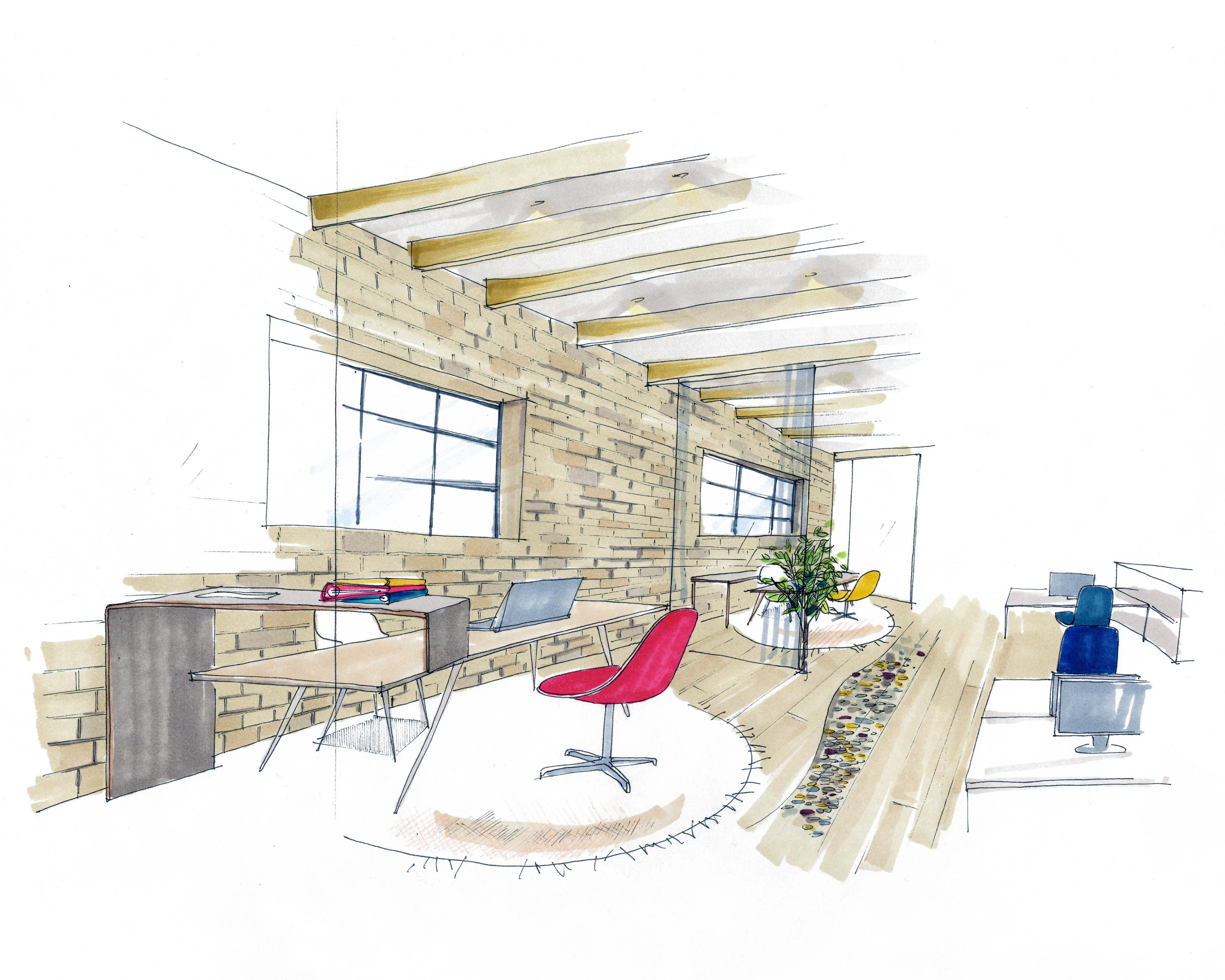

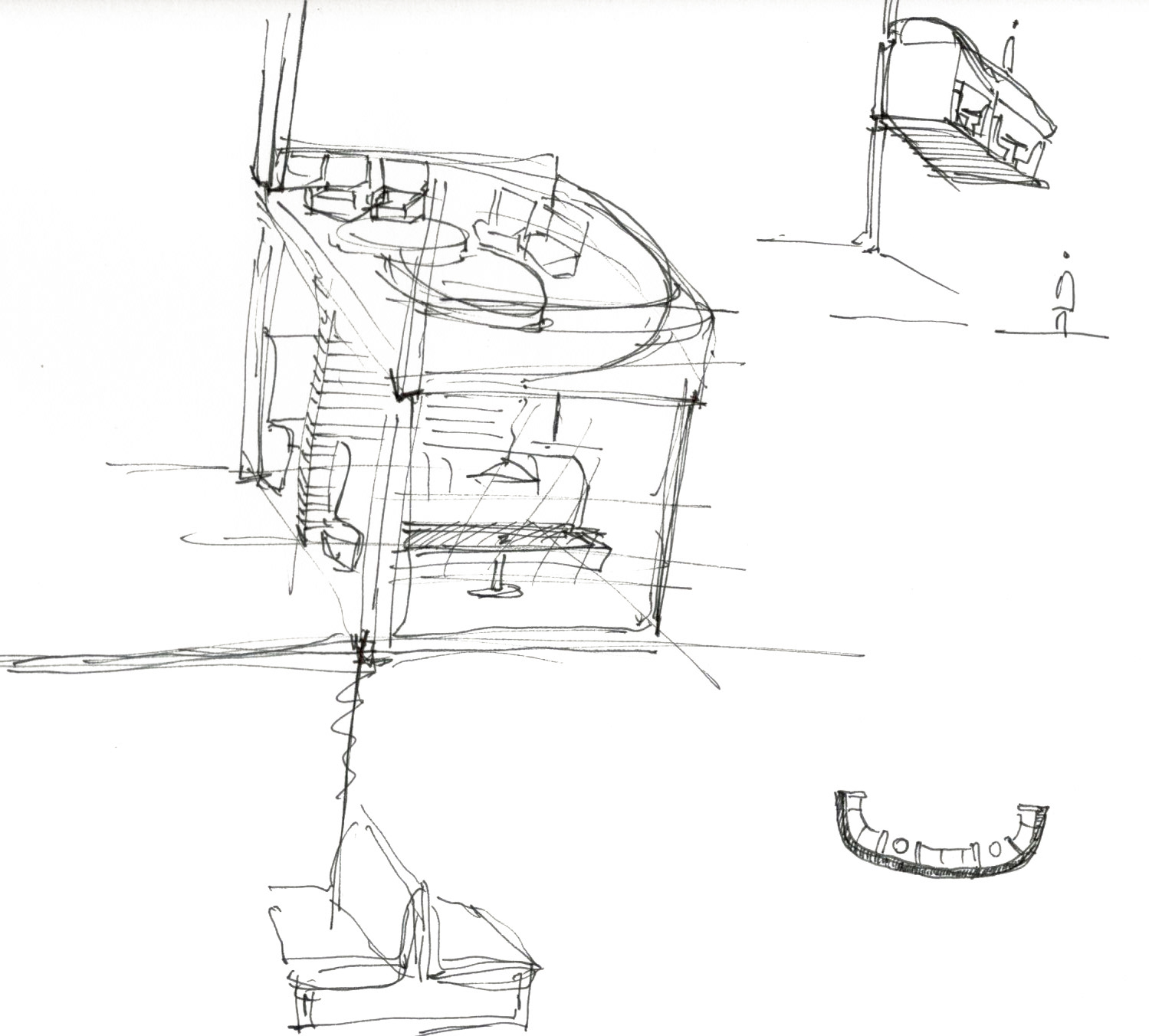
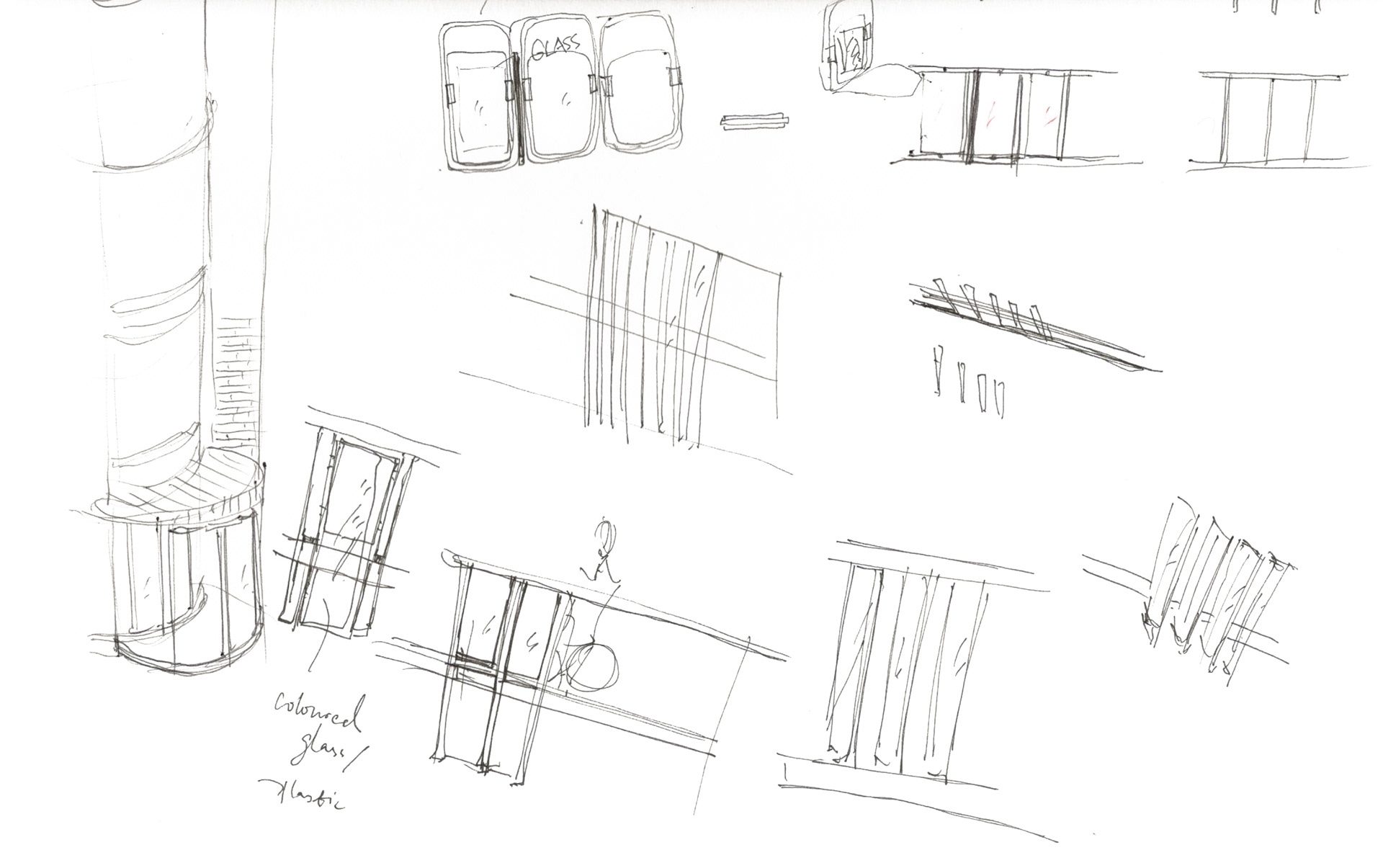
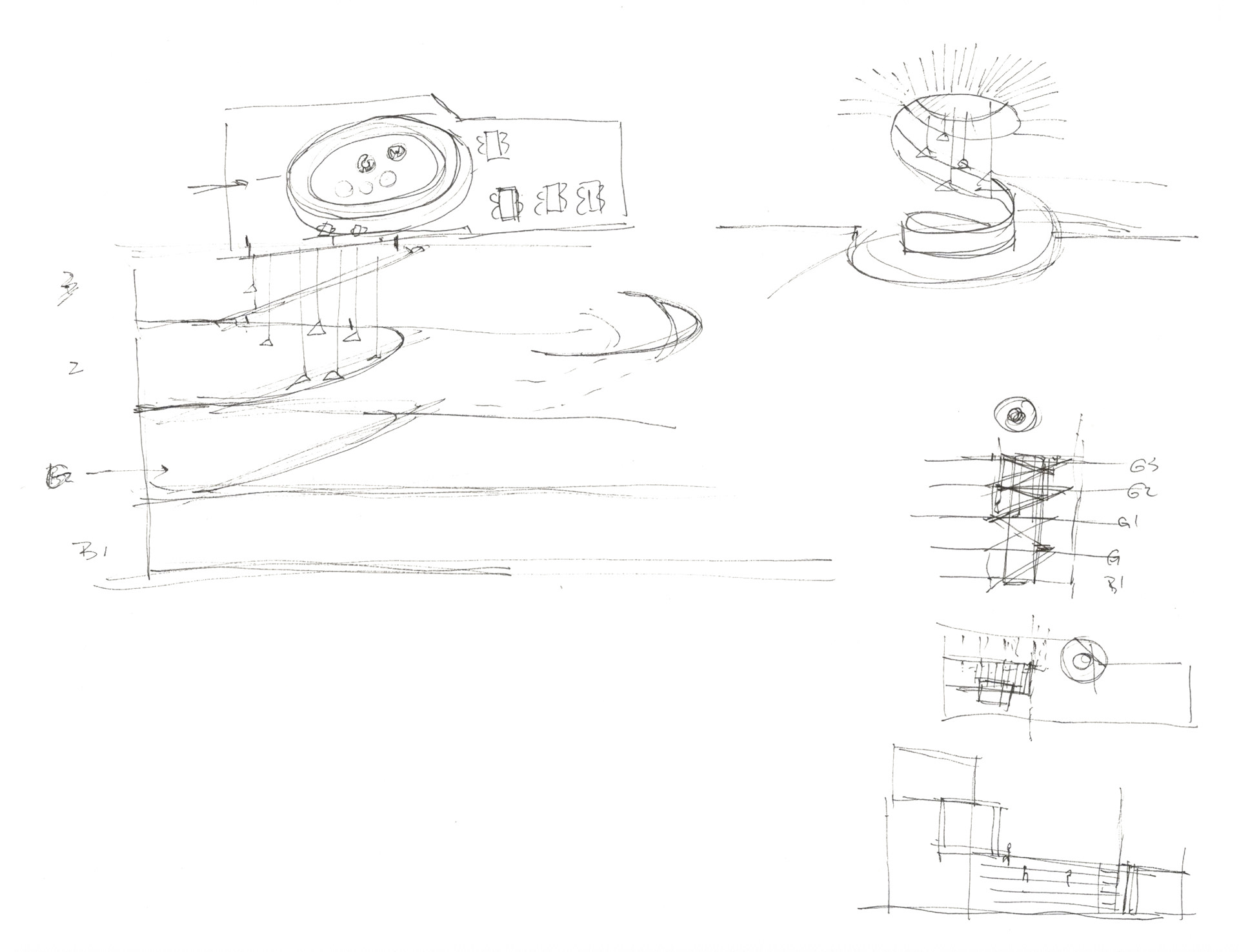
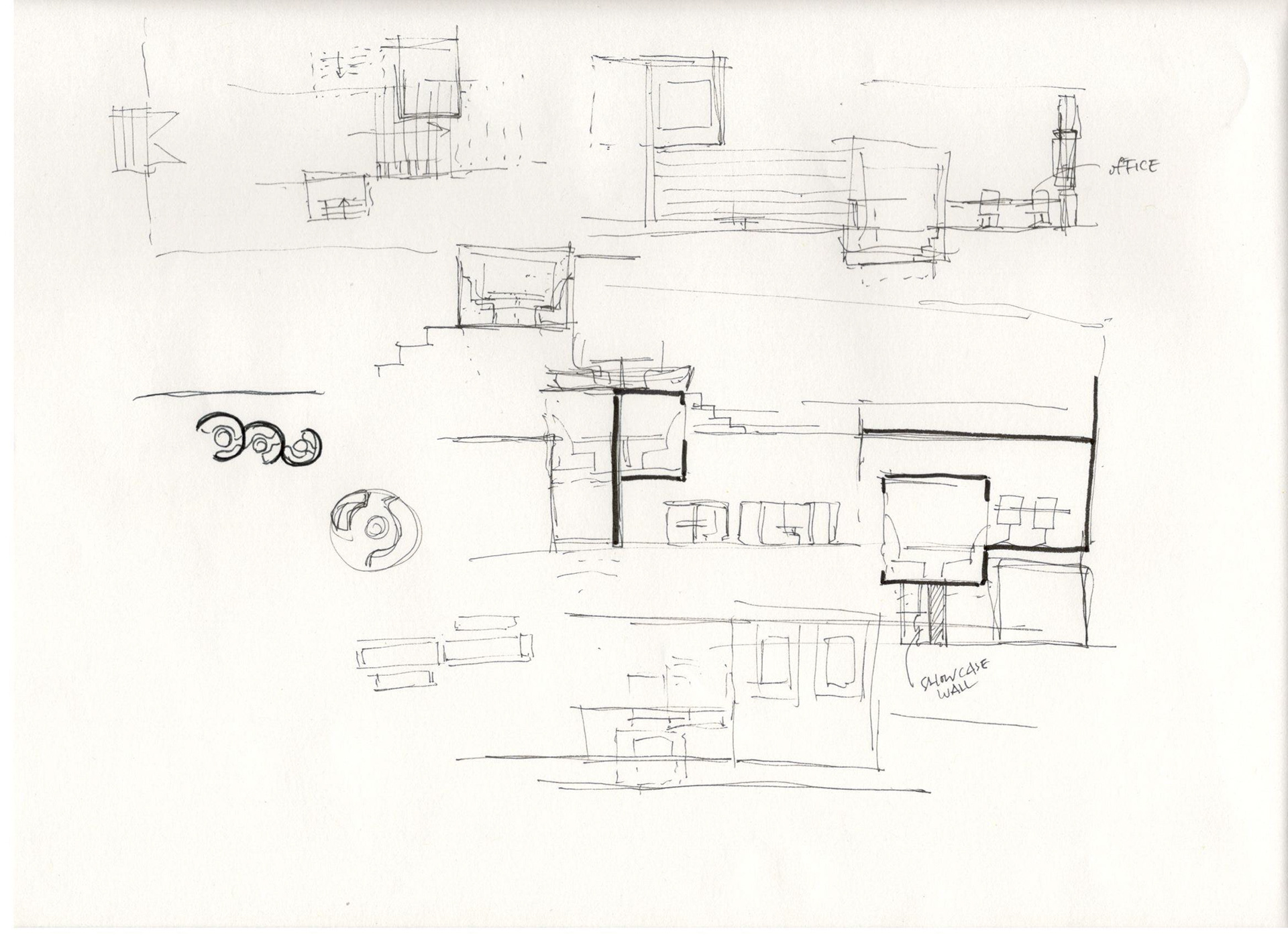
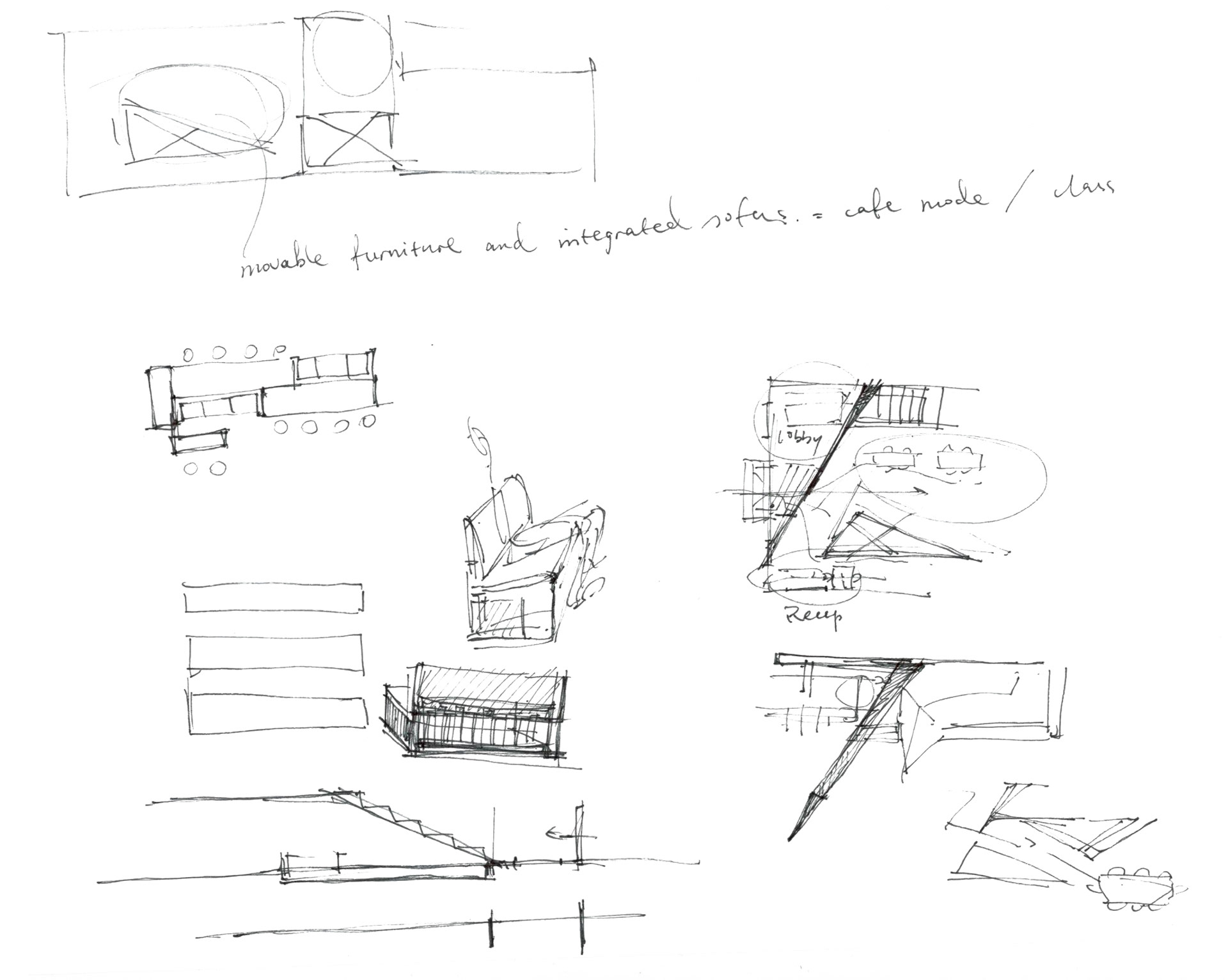

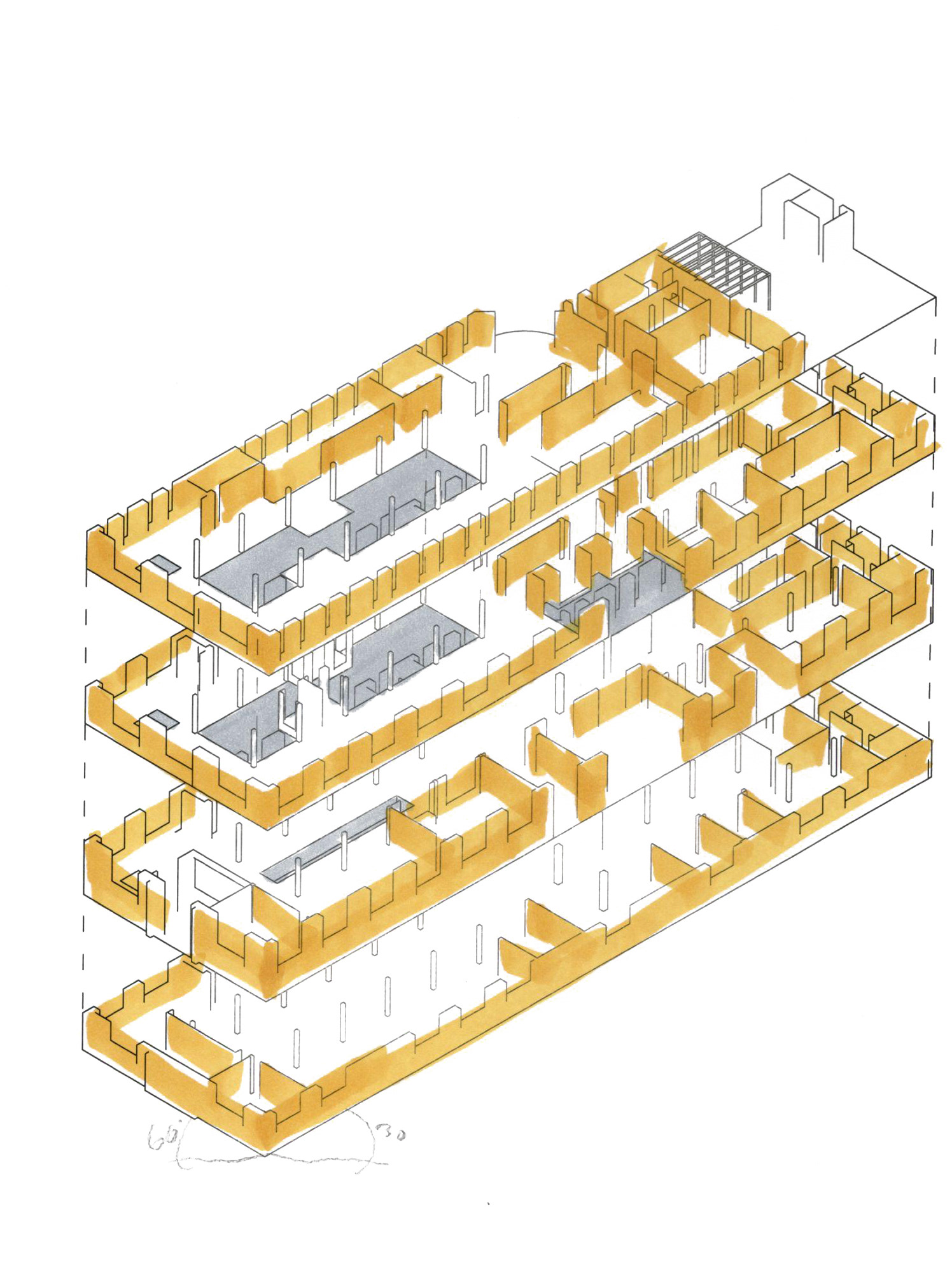
Following the initial sketches, I delved into the programming and space planning phase, where I meticulously analyzed the spatial requirements and functional needs of the building. This involved creating detailed floor plans for each of the four stories, ensuring that the layout facilitated movement and connection throughout the space. By strategically organizing the various areas, I aimed to optimize the flow between public social spaces, collaborative zones, and private workstations, creating a cohesive and efficient environment.


THE SOLUTION
I utilized a combination of SketchUp, AutoCAD, and Photoshop to create an axonometric view that vividly illustrated the design's spatial dynamics. I developed detailed renderings of key feature areas, including the community gallery, cafe, and gym, to demonstrate how these spaces can foster a sense of community and connection. These visualizations highlighted the potential of the design to bring people together, showcasing the integration of movement and social interaction within the workspace.
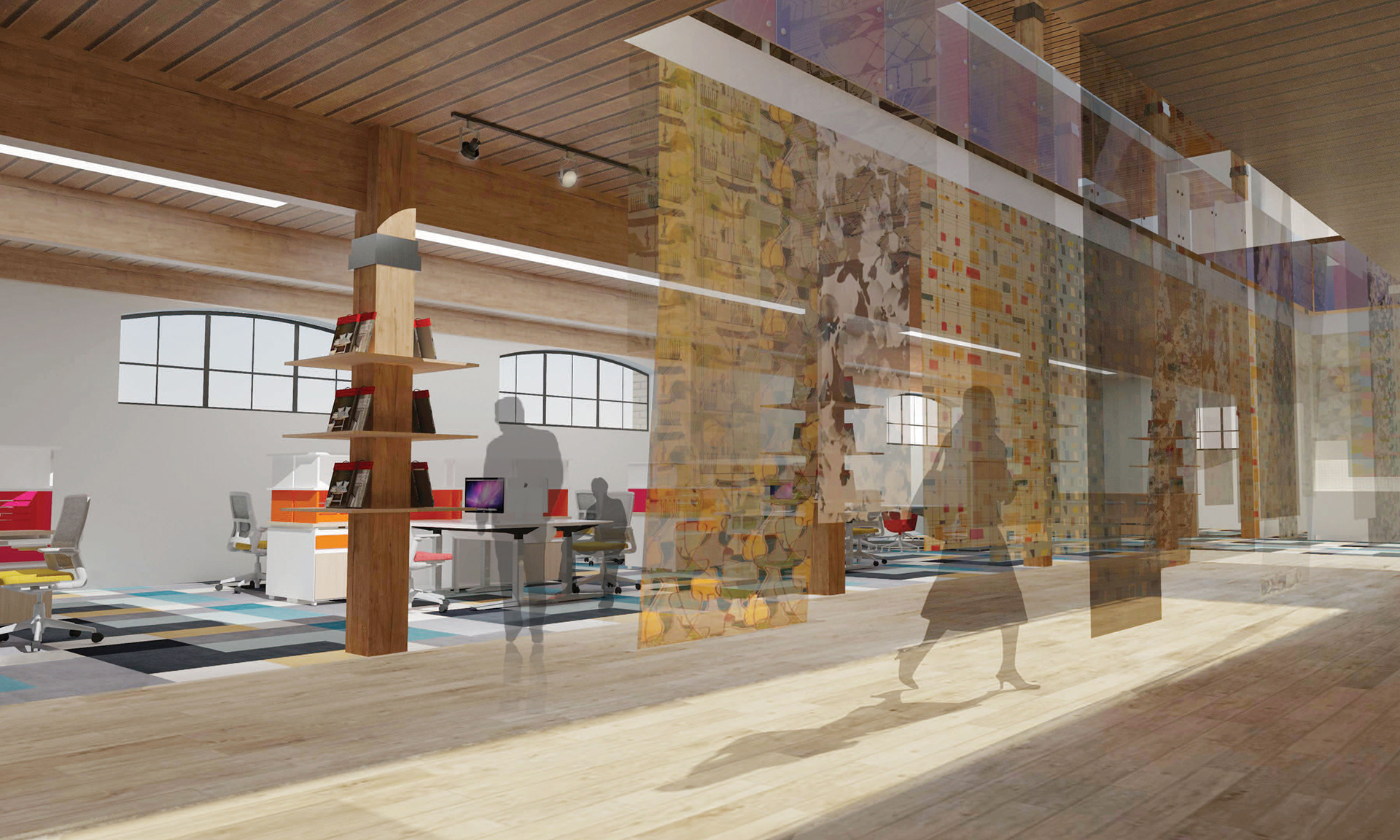
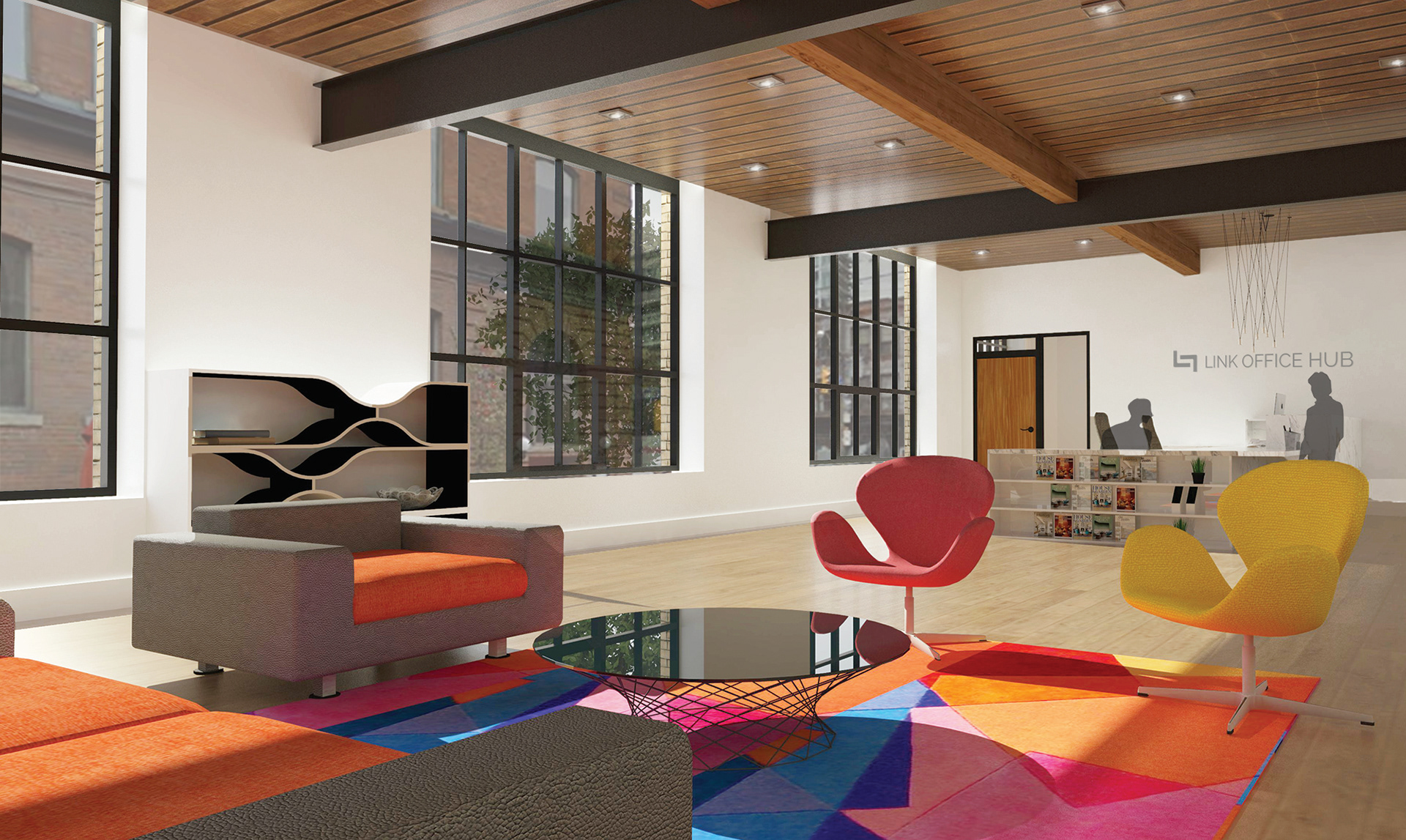
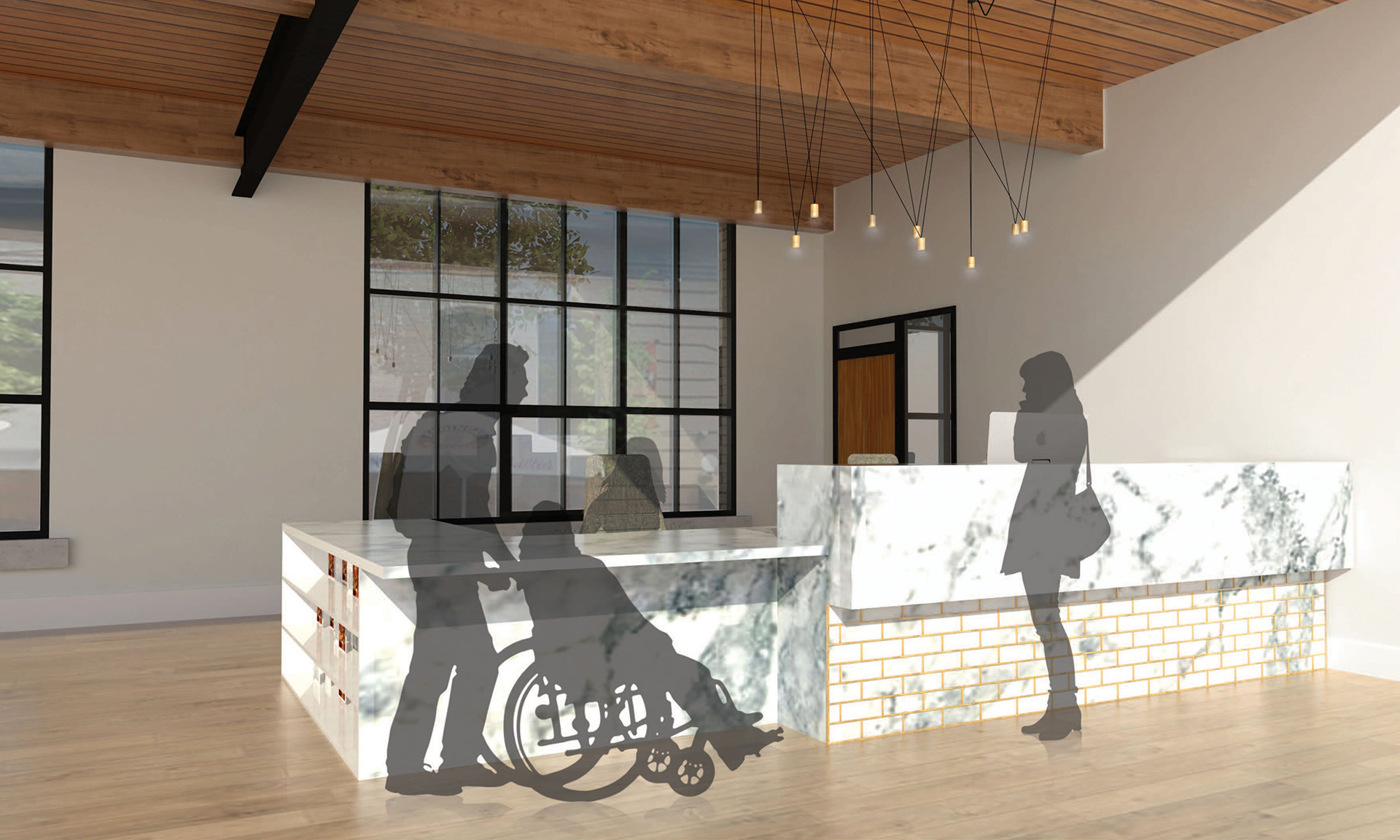
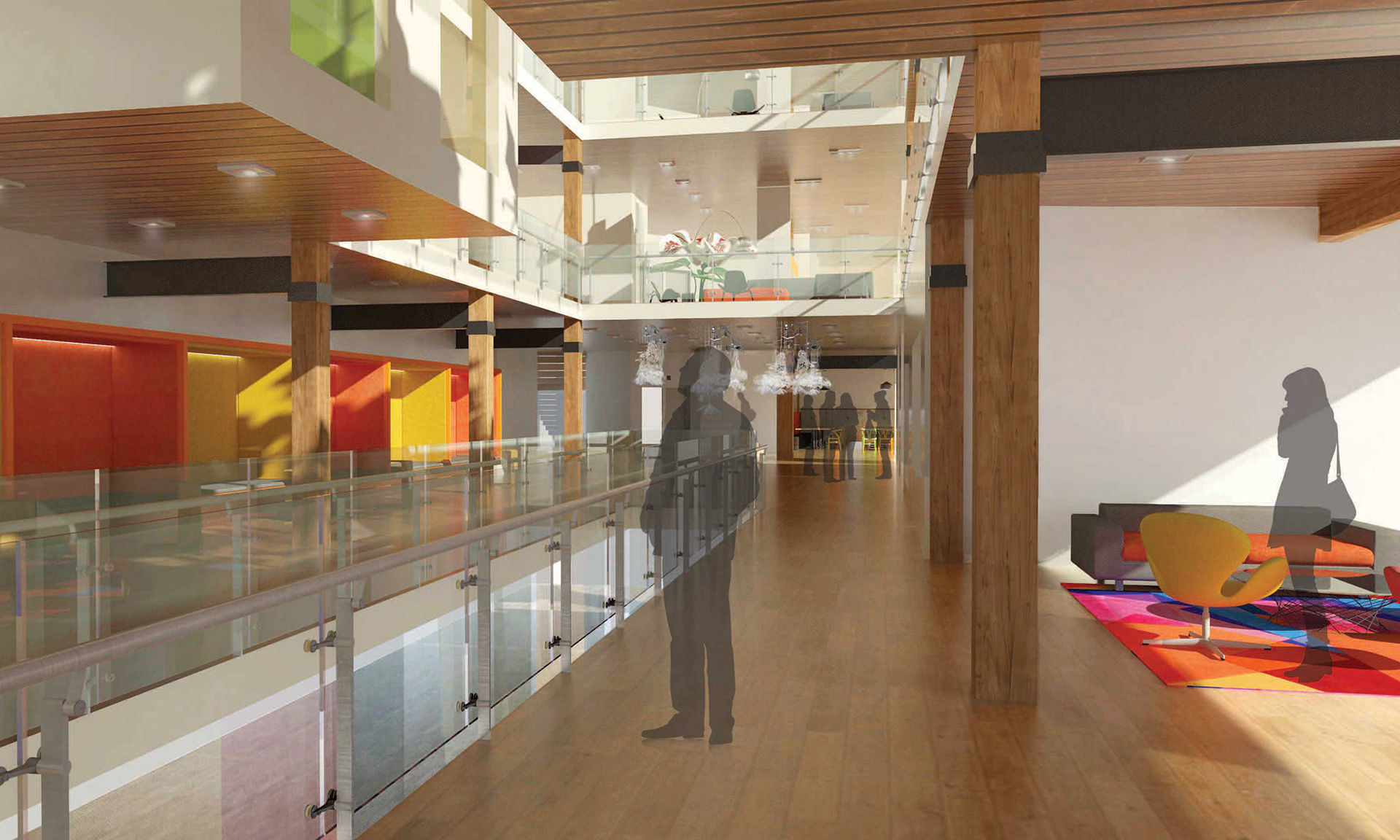
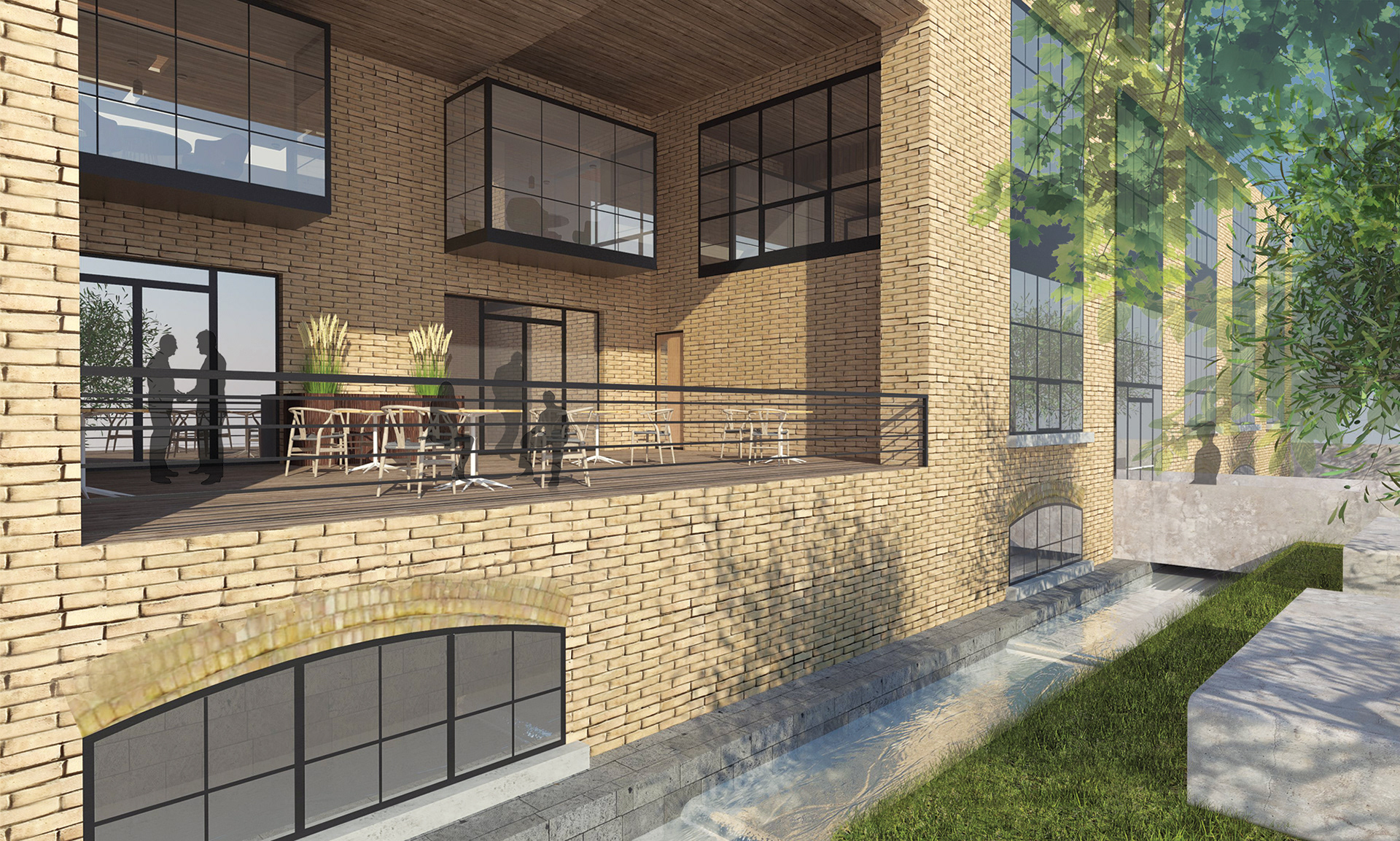
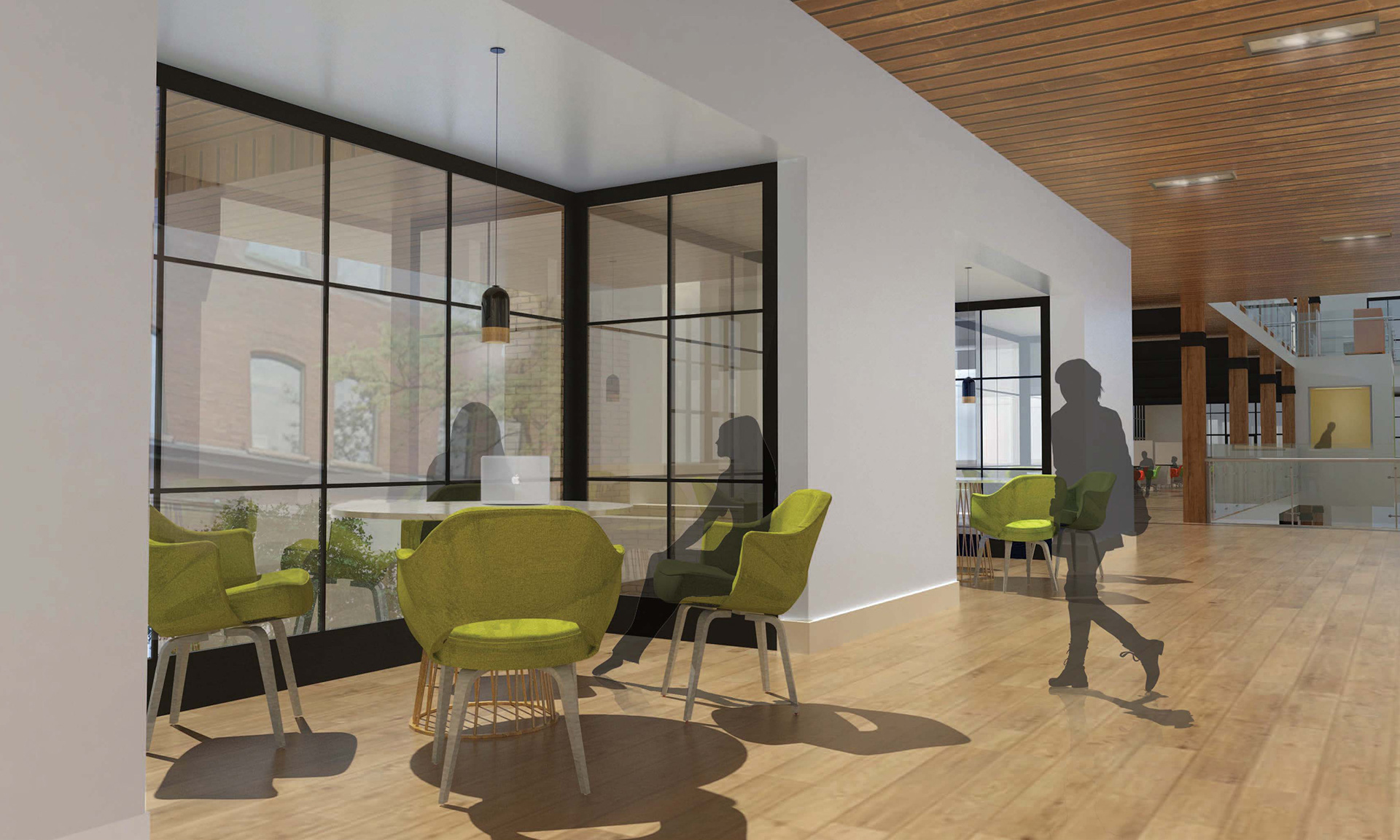
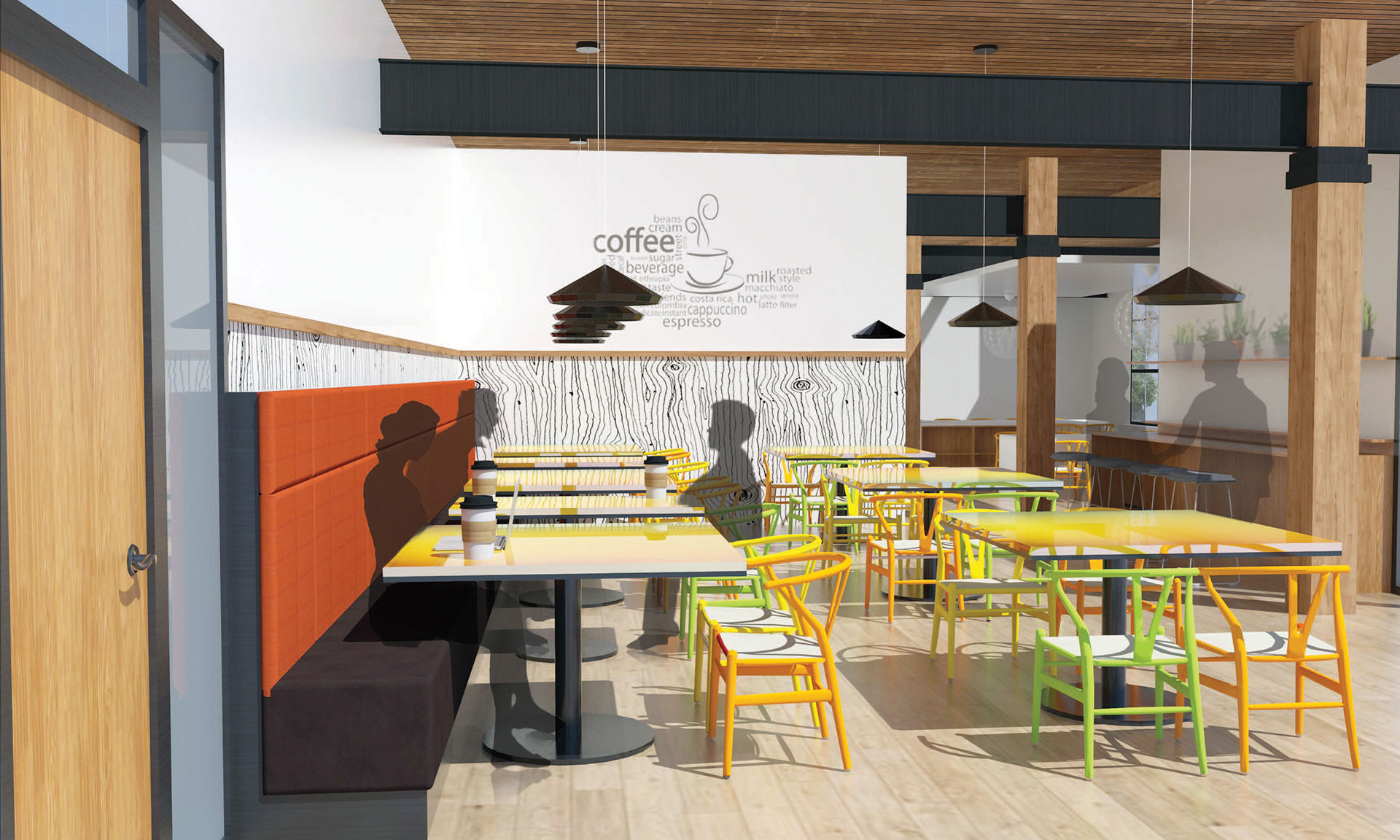

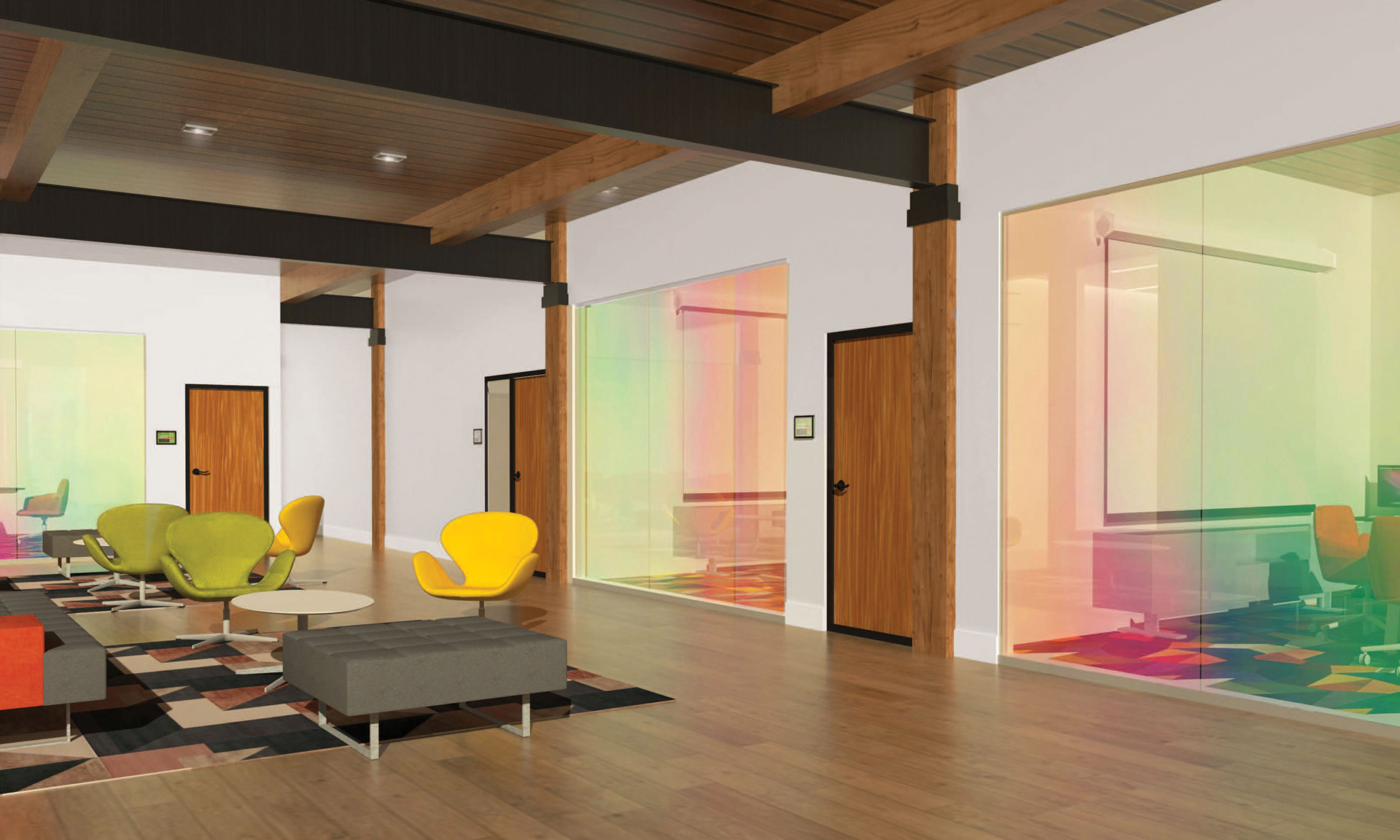
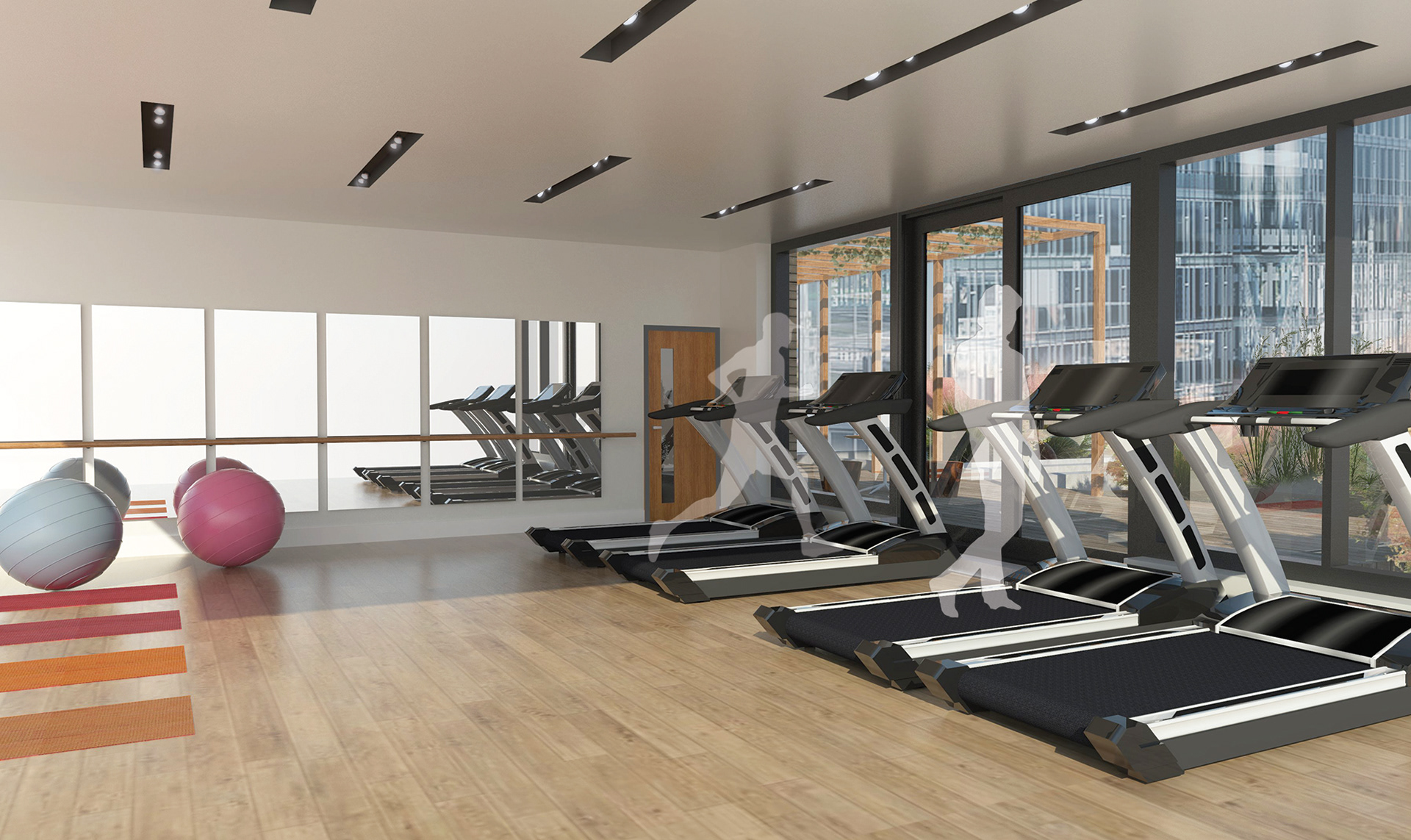
THE OUTCOME
The rendering was selected for inclusion in the third edition of "Colour & Two-Dimensional Design," authored by Glenn McArthur and published by OCAD University. Additionally, the work received an Honorable Mention for the Fourth Year Award.

